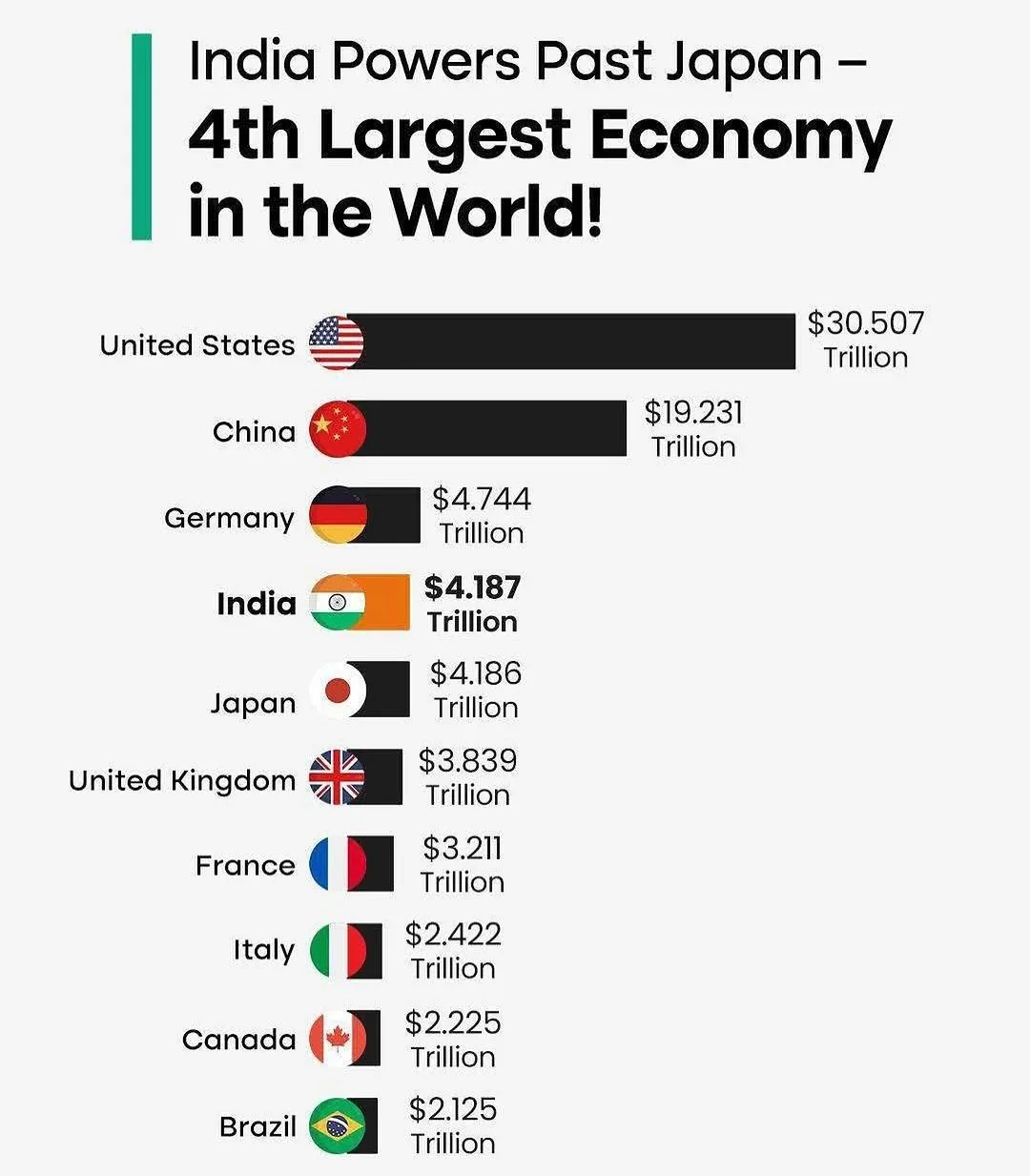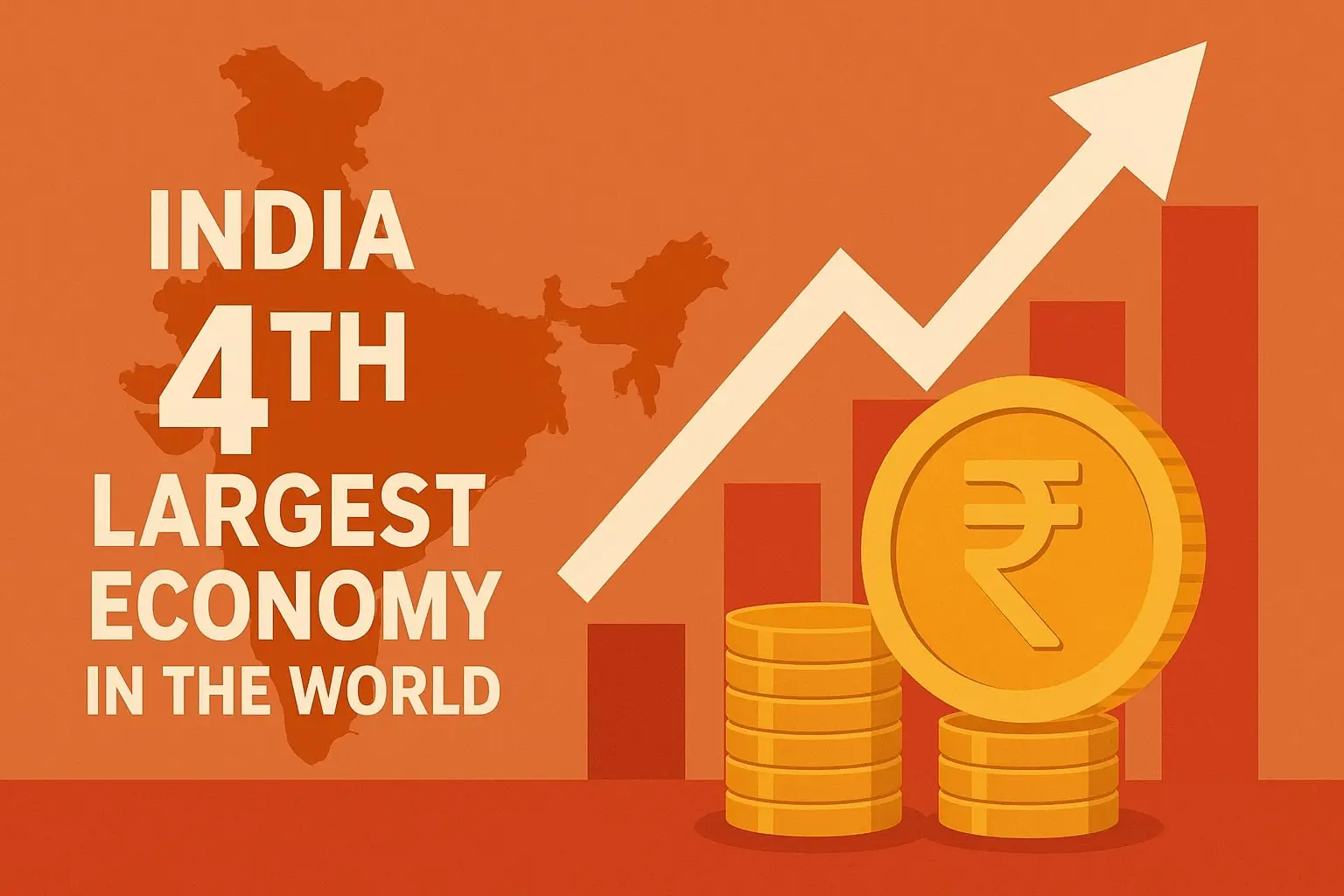India is poised to become the world’s fourth-largest economy by the end of 2025, overtaking Japan in nominal GDP terms, according to the International Monetary Fund’s (IMF) April 2025 World Economic Outlook report. This marks a significant milestone for the Indian economy, which stood as the 10th largest in 2014. The country’s nominal GDP has more than doubled in this period, projected to surpass $4 trillion by FY 2025–26.
This growth comes amid a turbulent global economic landscape marked by geopolitical conflicts, supply chain shocks, and trade tensions, including the resurgence of Trump-era tariffs. Yet, India continues to hold the position of the fastest-growing major economy, with the IMF projecting a 6.2% GDP growth rate in 2025.
Clarifying recent public discourse, NITI Aayog member Arvind Virmani explained that earlier remarks by NITI CEO BVR Subrahmanyam about India already being the 4th largest economy were based on IMF’s latest projections and not official rankings yet.

Reforms, Digitalization, and Demographics: What’s Fueling India’s Economic Engine?
Experts credit India’s growth story to structural reforms, policy continuity, and leveraging demographic dividends. Reforms such as the Goods and Services Tax (GST), the Insolvency and Bankruptcy Code (IBC), and the Production-Linked Incentive (PLI) scheme have modernized India’s economic infrastructure. These initiatives, paired with massive investments in roads, railways, energy, and defence, have created a strong foundation for sustained growth.
According to Sachchidanand Shukla, Group Chief Economist at L&T, India’s growth is being propelled by “reforms, demographic and digital advantages, and increasing infrastructure spending.” April 2025’s GST collection touched a record ₹2.37 lakh crore, signaling robust tax compliance and consumption.
Economists like Radhika Rao from DBS Bank point to a broader transformation. Investments in physical infrastructure, human capital development, digital public goods, and high-value sectors like semiconductors are deepening India’s role in global supply chains. At the same time, financial market evolution, including corporate debt markets and increased bank participation, is channeling capital into long-term growth sectors.
PwC’s Ranen Banerjee adds that India’s youthful population and rising consumption have formed a self-reinforcing cycle, fueling economic expansion and middle-class growth—especially in sectors like ITES and services.
The Paradox of Growth: Low Per Capita Income, Employment Gaps, and the Road to $5 Trillion
Despite India’s rising GDP and global status, the per capita income remains low due to the country’s massive population of 1.4 billion. India currently does not rank among the top 100 in global per capita GDP—even on Purchasing Power Parity (PPP) terms. Informality in the labor force (~90%) and low female workforce participation (26% vs global average of 47%) further dilute income gains.
Yet, per capita income has nearly doubled in the past decade, aided by slowing population growth and rising economic output. However, regional disparities persist, influenced by uneven development and demographic variations.
Looking forward, India aims to become a $5 trillion economy by 2027 and the third-largest global economy by 2028, overtaking Germany. To achieve this, experts emphasize continued structural reforms.
Key reform suggestions include:
- Decriminalizing regulatory compliance and streamlining business processes
- Labour law modernization through phased implementation in special zones
- Massive upskilling initiatives for youth to improve employability
- Agricultural and judicial reforms to boost productivity and governance
- Export ecosystem improvements for MSMEs and infrastructure-led cost reductions
Radhika Rao stresses that future growth must focus on employment generation to ensure income inclusivity. “Quality of growth is as vital as its pace,” she says, advocating for a continued focus on macroeconomic stability, trade diversification, and structural transformation.
India’s stable political leadership over the past decade has been key in maintaining investor confidence. However, for growth to be truly inclusive, India must bridge its income gap, create sustainable jobs, and boost its manufacturing base.
India’s ascent to the world’s fourth-largest economy is a landmark achievement shaped by visionary reforms, digital empowerment, and demographic strength. But its true test lies ahead—in ensuring that growth is inclusive, equitable, and sustainable. As India marches towards its $5 trillion dream, a relentless focus on reform, innovation, and execution will determine its long-term success on the global stage.


